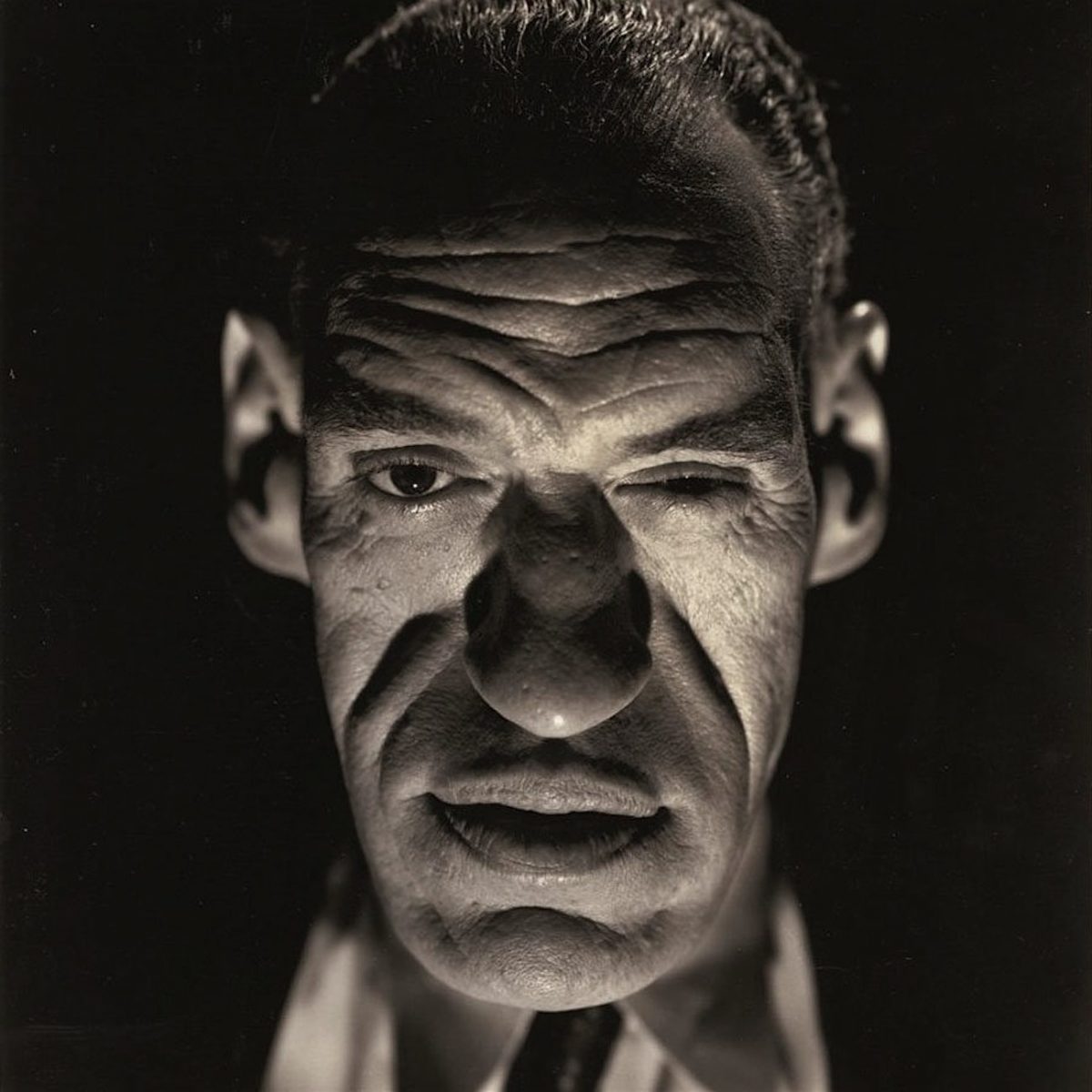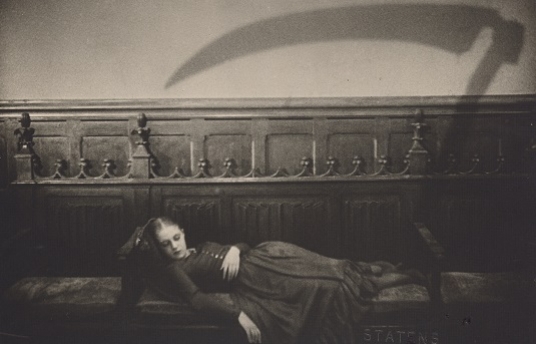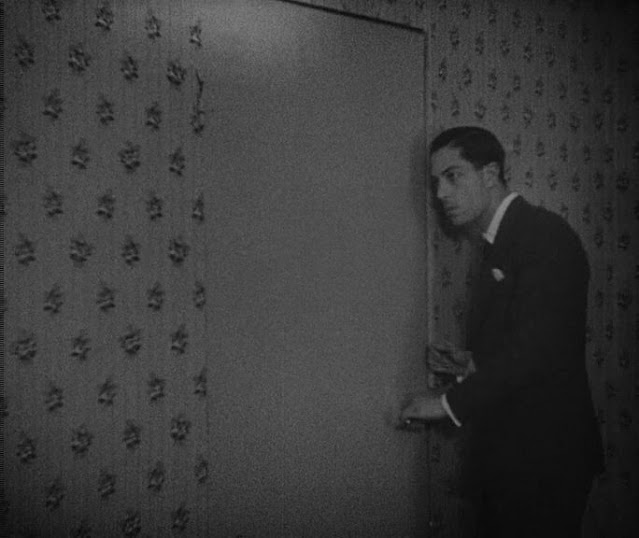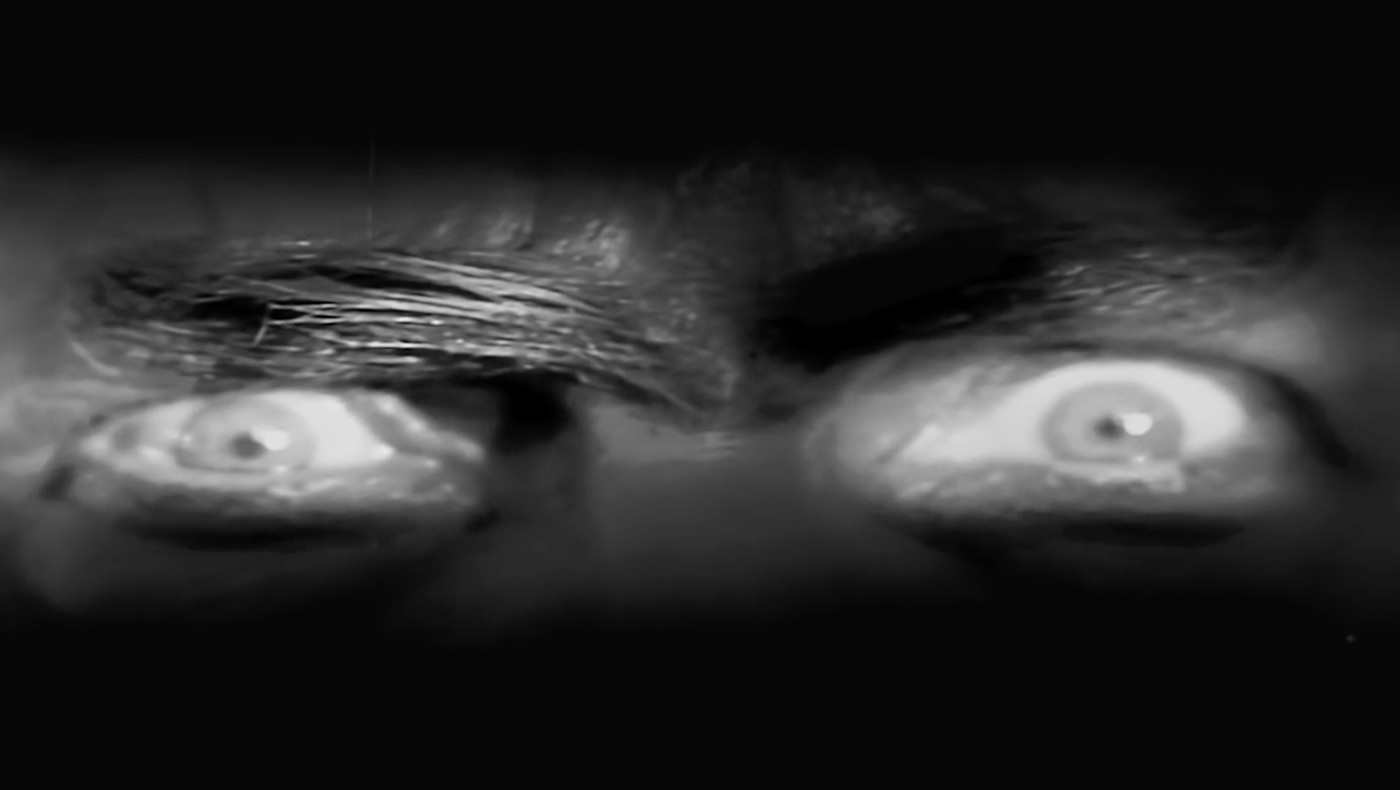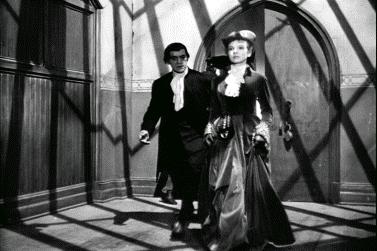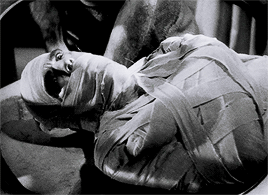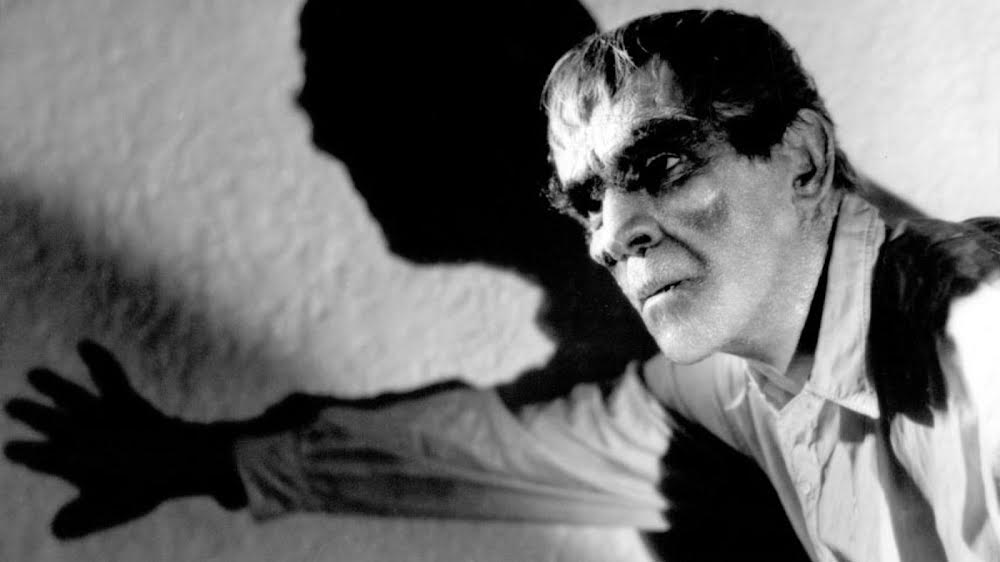Pages
Saturday, October 31, 2020
Friday, October 30, 2020
Wednesday, October 28, 2020
5 of the Best Fashion Moments in "Dracula's Daughter" (1936)
 |
| Gloria Holden in Brymer |
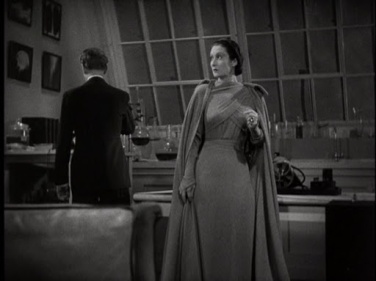 |
| Gloria Holden in Brymer |
 |
| Gloria Holden in Brymer |
 |
| Gloria Holden with Marguerite Churchill in Brymer |
Monday, October 26, 2020
#ManCrushMonday #MemorableSupportingActors Rondo Hatton
Rondo Hatton was a football and track star in his high school in Hillsborough, Florida. He was also named the "Handsomest Boy" in his graduating class. He had planned on joining the military even before WWI, fighting in the Mexican Border War and then in WWI where he was exposed to mustard gas which damaged his lungs when in the trenches outside Paris, France. Hatton was discharged and returned to Florida, becoming Tampa Tribune's sports writer.
At that same time, he developed acromegaly where his pituitary gland slowly deformed the soft tissues and bones in his face, hands, and feet leaving him deformed which was possibly caused by the mustard gas. But around the time he was covering the local filming of Henry King's "Hell Harbor," the director came up to him and offered him a role. Hatton and second wife Mabel Housh moved to Hollywood in 1936 and he was offered many small roles in huge films from "The Hunchback of Notre Dame" (1939) and "The Ox-Bow Incident" (1943). Universal had billed him as "the monster who needs no makeup." He was best known for playing the "Creeper" in "Pearl of Death" (1944) along with posthumously released "House of Horrors" and "The Brute Man" in 1946. Hatton would die after a series of heart attacks as a result of acromegaly on February 2, 1946.
Thursday, October 22, 2020
#Deathmatch #SilentFilmEdition "Nosferatu" (1929) vs. "Vampyr" (1932)
History
You Have Hurt Yourself ... Your Precious Blood! The Blood! The Blood!
Death Match
or reload the browser
or reload the browser
or reload the browser
Tuesday, October 20, 2020
TCM Movie: White Zombie (1932)
"The earliest press mention of White Zombie was likely the January 6, 1932, Hollywood Reporter comment that the Halperins had leased office space at Universal Studios to get their film "Zombie" underway. Whether they were aware of the preproduction of the Broadway play Zombie is unknown, but many readily thought the play was a natural for the screen." (Rhodes. White Zombie: Anatomy of a Horror Film. 2001.)
10 days after the Broadway play "Zombie" premiered, the Motion Picture Herald "claimed that "Zombie ...will soon find its way into celluloid. Representatives ... are ... negotiating for screen rights." But director Victor Halperin and producer Edward Halperin didn't have a script yet and the budget was just as ambiguous from being anywhere between $50,000 to $62,500 after having divested from Liberty Films to Phil Goldstone Productions. But as to if producer Phil Goldstone or the Halperin brothers had to or didn't ask permission for "Zombies"'s rights for the screen is even less ubiquitous.
"As a Chicago Tribune article that spring made clear, "Cinema Rights to Plays Bring Petty Prices." The press seemingly did not suggest the Halperins stole or appropriated the idea of zombies from Webb's play. Perhaps the only question to have arisen was one posed by The Hollywood Reporter. Immediately after discussing White Zombie, the trade asked "What producer, strapped for a suitable title on a finished film, appropriated one from a play which had been submitted and then found out he would have to pay a century for its use--and is it worth it?" The comment seems to point to White Zombie, but if so the answer to the question "Is it worth it" would have to be a resounding "no." After all, the word "zombie" had appeared both in Seabrook's book The Magic Island [the first time the word had appeared in popular culture] and as the title of 1929's unproduced play Zombi [sic]."
"While it is entirely possible that [producer George] Sherwood or [screenwriter Kenneth] Webb or both contacted the Halperins, no evidence exists of a lawsuit. Not only did no mention of legal action appear in the movie trade publications or theater magazines, absolutely no pertinent legal documents exists in the New York City area. This is key, because any lawsuit actually heard before a court with regard to Amusement Securities (ASC, partial financiers of White Zombie) or Halperin Productions as defendants would had to have occurred in New York City; a later, 1936 court case made that fact quite clear. Secondarily, the same 1936 case covered in detail the legal history of White Zombie, as well as any trademarks or rights to the word "zombie"; it makes no mention of any legal encounter between ASC."
Phil Goldstone ended up being a great help in not only securing Madge Bellamy as "White Zombie"'s female lead (her salary being $5,000) in the attempt of reviving her career, but also choosing pre-made set pieces from an array of Universal horror films and the interiors from RKO-Pathe's "The King of Kings" (1927) as well as Bronson Canyon for zombie crowd shots through a graveyard. Carl Axcelle and Jack Pierce of Universal designed the zombie makeup.
But the Halperin brothers offered the role of Haitian plantation master "Murder" Legendre to Bela Lugosi directly which he immediately accepted. "The actor later said that they bid $500 for his services (Other figures range from $800 to $1,000). Afraid to leave space for yet another rival and always anxious to play a leading role--he was also broke, as usual--Lugosi accepted Halperins' offer. In fact, after Frankenstein, he seemingly never said no." (Lennig. The Immortal Count: The Life and Films of Bela Lugosi. 2010.) Lugosi would model his portrayal of Legendre on a prior role he played in Richard Eichberg's German film "Sklaven Fremdes Willens" (Slave of a Foreign Will) (1919) as Professor Mors who places a young woman he is infatuated with under hypnosis then rapes her.
"White Zombie" was shot in only 11 days in March 1932 and premiered at the Rivoli Theater in New York City on July 28, 1932. It received a mixed box office reception, but proved a great financial success for an independent film.
L.N. at the New York Times quotes one piece of dialogue as being ""The whole thing has me confused; I just can't understand it." That was, as briefly can be expressed, the legend for posterity of "White Zombie." Charity--still the greatest of the trilogy--suggests the sentence be allowed to stand as comment. To go on would lead only to a description of why the eagles screamed, and that would prove very little indeed, in the orderly scheme of life. There was, in short, no great reason. Nor was there, to be candid, much reason for "White Zombie."" Variety felt "its atmosphere of horror is well sustained and sensitive picture-goers will get a full quota of thrills," but added that although Lugosi "gives an exceptionally good performance," the film is "not quite up to Broadway." But the New York World Telegram was ruthless in its review. "As entertainment as it is nil. . . . White Zombie is such a potpourri of zombies, frightened natives, witch doctors, leering villains, sinister shadows, painted sets and banal conversation on the black magic of the island that the actors of necessity just move along. There are, however, moments when they get a chance to act. But the less said about the better."
White Zombie will be playing on Turner Classic Movies at 11:00 AM CST Friday, October 30th.
or reload the browser
Friday, October 16, 2020
Wednesday, October 14, 2020
#WomanEmpowermentWednesday Anna Lee as Nell Bowen in "Bedlam" (1946)
As a protege of Lord Mortimer, Nell Bowen has fallen into being concerned with the human relations and treatment at St. Mary's of Bethlehem Asylum (a fictionalized version of Bethlem Royal Hospital) after an acquaintance of Mortimer's falls to his death when he tries to escape. She goes head to head with the apothecary general Master George Sims personally after discovering how the patients at the asylum are being treated. When she brings in Whig politican John Wilkes to help reform the asylum, Mortimer and Sims gets nervous and committs her to St. Mary's. But once Nell gets used to the horrible state of the patients, she prevails through nursing them physically and emotionally although Sims comes up with another idea to keep her mouth shut.
Monday, October 12, 2020
Thursday, October 8, 2020
TCM Movie: The Ghoul (1933)
As King Kong premiered at New York's Radio City Music Hall and Roxy Theater the evening of March 2, 1933, Boris Karloff was on a plane to catch the S.S. Paris there partly to make the second British horror film "The Ghoul" and partly to escape Hollywood. His relationship with Universal continued to be a torrid one between his acquired back injuries while playing The Creature in "Frankenstein" (1931) and his current issues attempting to raise his weekly salary from $750 to $1,000 during the depths of The Depression. Universal balked, yet surprised the actor with his transportation but was unable to give him expenses to spend other than $12 they accumulated from emptying the pay phones on the Universal lot.
"It was a perilous flight, the plane eluding Frankenstein-like lightning in a stormy night sky. It arrived late in New York, so a tugboat had to deliver Boris and Dorothy to the already set-sail Paris. On board they found actor crony James Gleason and his wife (Gleason himself en route to a film in London) and had a wonderful trip -- enjoying an on-board screening of the three Barrymores in Rasputin and The Empress, charging everything and arriving in England, as Dorothy put it, "with a spectacular bar bill."
[...]
"Back in England for the first time since his 1909 exile, Boris enjoyed a major star reception, was too excited to sleep, took in the theatre and clubs, charmingly gave autographs to the crowds that pursued him, and, after all of these years, visited his brothers -- all distinguished members of the consular service. One of Boris's favorite stories for the rest of his life was how he dreaded a photographer's requesting a picture of him with his siblings at a London reception. Instead of deeming such a thing beneath their dignity, the Pratt brothers ("pleased as three boys!" recalled Karloff) all posed before a fireplace, excitedly arguing as to where each should stand.
""No sooner was the picture taken than all three brothers began to inquire how soon they would secure prints, and by the time I was in a positive glow of relief. A film actor had been received in the British diplomatic circles and made good!"" (Mank. Bela Lugosi and Boris Karloff: The Expanded Story of a Haunting Collaboration. 2009)
Karloff was Guamont's production-director Michael Balcon's only choice to play Professor Henry Morlant in the screen adaptation of the Frank King-Leonard J. Hines novel. Balcon had been put in charge of both Gaumont and Gainsborough Pictures, giving the higher brow productions to Gaumont and the lower to Gainsborough.
But producing "the second British film to deal with horrific themes" (The Ghoul (1933) - Articles - TCM.com) had advantages with the networking Balcon already had with the currently bankrupted German studio UFA GmbH after having sent a young Alfred Hitchcock there in 1925 for him to learn German Expressionist techniques. He would end up hiring many German immigrants onto his production team including the Austrian Director of photography Günther Krampf who had worked as a cameraman on F.W. Murnau's "Nosferatu" (1922) and G.W. Pabst's "Pandora's Box" (1929). Art director Alfred Junge and makeup man Heinrich Heitfield would also be added to the crew yet the director of "The Ghoul" ended up going to the American director Thomas Hayes Hunter who had been living in London since 1927.
The film was shot at Lime Grove Studios in Shepherd's Bush and was allocated a budget just over £30,000. But between the excessive demands from Krampf and Junge, the film came in under £40,000. It was released in London August 7th and then in the U.S. November 25th to lukewarm reviews. The New York Times described "The Ghoul" as "a newsreel of a Sunday school picnic would have been more thrilling." (BFI Screenonline: Ghoul, The (1933))
Karloff returned to Hollywood in June of 1933 to find his weekly salary was raised to $1,250 and an agreement was made with Universal allowing him to work outside of the horror genre and with other studios. Universal would call him back yet again in 1934 for his first collaboration with fellow horror actor Bela Lugosi in "The Black Cat."
"The Ghoul" would be screened multiple times up until 1938, the reels being considered lost as of the 1940s.
"In 1969, collector and horror film historian WIlliam K. Everson located a murky, virtually inaudible nitrate subtitled copy, Běs in Czechoslovakia. Though missing eight minutes of footage, it was thought to be the only copy left. [...] In the 1980s, a disused and forgotten film vault at Shepperton Studios was discovered behind a stack of wood. This was cleared and yielded the dormant nitrate camera negative in perfect condition. The British Film Institute took in The Ghoul, new prints were made and the complete version aired on TV on Channel 4 in the UK." (The Ghoul - UK, 1933 - reviews - MOVIES and MANIA)
The Ghoul will be playing on TCM Friday, October 9 @ 7:00 CST
or reload the browser
or reload the browser
Tuesday, October 6, 2020
#RemakeThis: The Mummy's Curse (1944)
With over 5 credited and uncredited screenwriters assigned to "The Mummy's Curse," the film was already fated for inconsistencies. In the Universal world, "...Curse" would have been placed in the 1990s but not set in New England where Imhotep (now Kharis) had dragged Princess Anaka's body into a swamp in the first movie back in 1932. 25 years later, the swamp is now drying out in Louisiana in the late 1960s. With the use of prior footage of Karloff and Tom Tyler in the title role, the Mummy character ends up being played by three different actors in one movie. These things have been attributed to the low box office numbers and moderate to poor reviews.
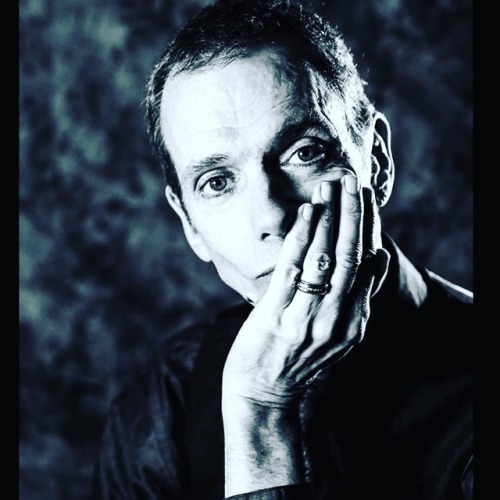 |
| Doug Jones as Kharis The Mummy |
 |
| LaKeith Stanfield as Dr. James Halsey |
 |
| Maya Hawke as Betty Walsh |
 |
| Nina Dobrev as Princess Ananka |
 |
| Julia Stiles as Pat Walsh |
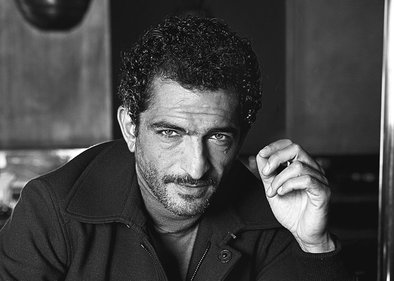 |
| Amr Waked as Dr. Ilzor Zandaab |
 |
| Dhafer L'Abidine as Ragheb |


